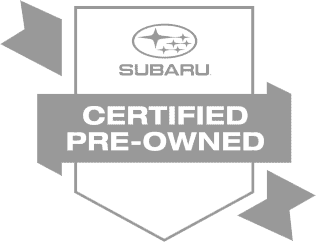

Tire Speed Ratings:
Tire
speed ratings tell the speed your tire can safely maintain over time.
The U.S. Department of Transportation (DOT) set the ratings scale, shown
below. But tire manufacturers test their own tires and assign their own
tire speed ratings. On the sidewall of every tire, you'll find one of
these tire speed rating codes:
Where to Find Speed Rating and Load IndexYour Subaru tires have a load index and tire speed rating symbol (see
diagram). Use the Tire Finder (above) to find the Original Equipment
tire size, tire load index, and a tire speed rating for your vehicle.
A
load index is an assigned number ranging from 1 to 279 that corresponds
to the load-carrying capacity of a tire. Passenger cars and light-duty
trucks generally have load index number that ranges from 72 to 120.
We
recommend replacing your Subaru tires with ones that have the same
load and speed values as those originally installed on your vehicle. Do
not replace tires on your vehicle with a lower load and speed value.
Replacing tires that have a higher load and speed value is acceptable. |  |
Tire Size
The
tire size is a combination of letters and numbers used to define a
particular tire's width, height, aspect ratio, construction type, and
service description.

Department of Transportation (DOT)
The DOT code indicates that the tire is in compliance with U.S. Department of Transportation Motor Vehicle Safety Standards.

Tire Identification Number (TIN)
The
letters and numbers following the DOT code make up the TIN. The TIN
shows the manufacturer and plant code, tire size, and date the tire was
manufactured. The TIN is molded onto both sides of the tire, although
only one side may have the date of manufacture.

Tire Ply Material
The type of cord and number of plies in the sidewall and under the tread.

Since
tires play a major role in establishing the personality of a vehicle,
many manufacturers require their tire suppliers to identify their
Original Equipment (OE) tires with symbols or codes branded on the
sidewalls.
The
goal is to make it easier for owners to identify and select exact
replacements when the OE tires wear out. Matching the original tires
exactly helps maintain the vehicle's integrity.

Uniform Tire Quality Grading (UTQG)
A
tire information system that provides consumers with ratings for a
tire's traction (from AA to C) and for temperature (from A to C). Tread
wear is normally rated from 60 to 620. Ratings are determined by tire
manufacturers using government-prescribed test procedures and are molded
into the sidewall of the tire.

Maximum Cold Inflation Load Limit
This
information tells the maximum load that can be carried and the maximum
pressure needed to support that load. Find more information on tire
pressure and inflation.

Tire Performance Criteria Specifications (TPC SPEC)
Most
OEM tires designed to Subaru's specific tire performance criteria have a TPC
spec code molded onto the sidewall. Subaru's TPC specs meet or exceed all
federal safety guidelines.


Knowing When to Replace Your Tires
Tread
wear indicators appear when the tires only have 2/32 inch or less of
tread remaining. Rubber in tires ages over time. This also applies to
the spare tire (if available), even if it is never used. Multiple
factors including temperatures, loading conditions, and inflation
pressure maintenance affect how fast tires age.
Other warning signs that your vehicle will need tire replacement:
- You can see three or more tread wear indicators around the tire
- The tire cord or fabric is showing through the rubber
- The tire tread or sidewall is cracked, cut, or snagged deep enough to show cord or fabric
- The tire has a bulge or split
- The tire has a puncture, cut, or other damage that can't be repaired correctly
Measuring Tread DepthA
quick and easy way to check your tire wear is with a tread-depth gauge.
These tools come in either digital or mechanical versions. The easiest
way to check wear on your tire is with a penny. Place a penny upside
down in between the tire tread as shown on the right. If you can see the
top of Lincoln's head, the treads are worn and tire replacement is
needed. |  |
Types of Tires:
All Terrain Tires
All-terrain
tires provide good performance on most road surfaces, in most weather
conditions, and for off-road driving. The tread pattern on these tires
may wear more quickly than others. Consider rotating these tires more
frequently than the recommended 6,000 miles if you notice irregular
wear.

Run Flat Tires
Run-flat
tires can be driven on with no air pressure. There is no need to stop
to change the tire. Continue driving, but not too far or too fast.
Driving on the tire may not be possible if there is permanent damage. To
prevent permanent damage, keep speeds below 50 mph.

Performance Tires
Performance
tires are designed for enhanced handling under demanding circumstances
and generally have high-speed ratings with a low aspect ratio for
improved control. These tires are not built for winter conditions.

All Season Tires
All-season
tires are for year-round use and feature a blend of technologies that
make use of different compounds and detailed tread configurations,
designed for most driving conditions such as snow, rain, heat, cold,
etc. These tires offer good overall performance on most road surfaces
and in most weather conditions.

Summer Only Tires
Summer
tires have a special tread and compound that are optimized for maximum
dry- and wet-road performance. This special tread and compound will
decrease performance in cold climates and on ice and snow.

Snow/Winter Tires
Winter
tires are designed for increased traction on snow- and ice-covered
roads. With winter tires, there may be decreased dry-road traction,
increased road noise, and shorter tread life. After changing to winter
tires, watch for changes in the vehicle’s handling and braking.

Start Your Tire Search Now!





